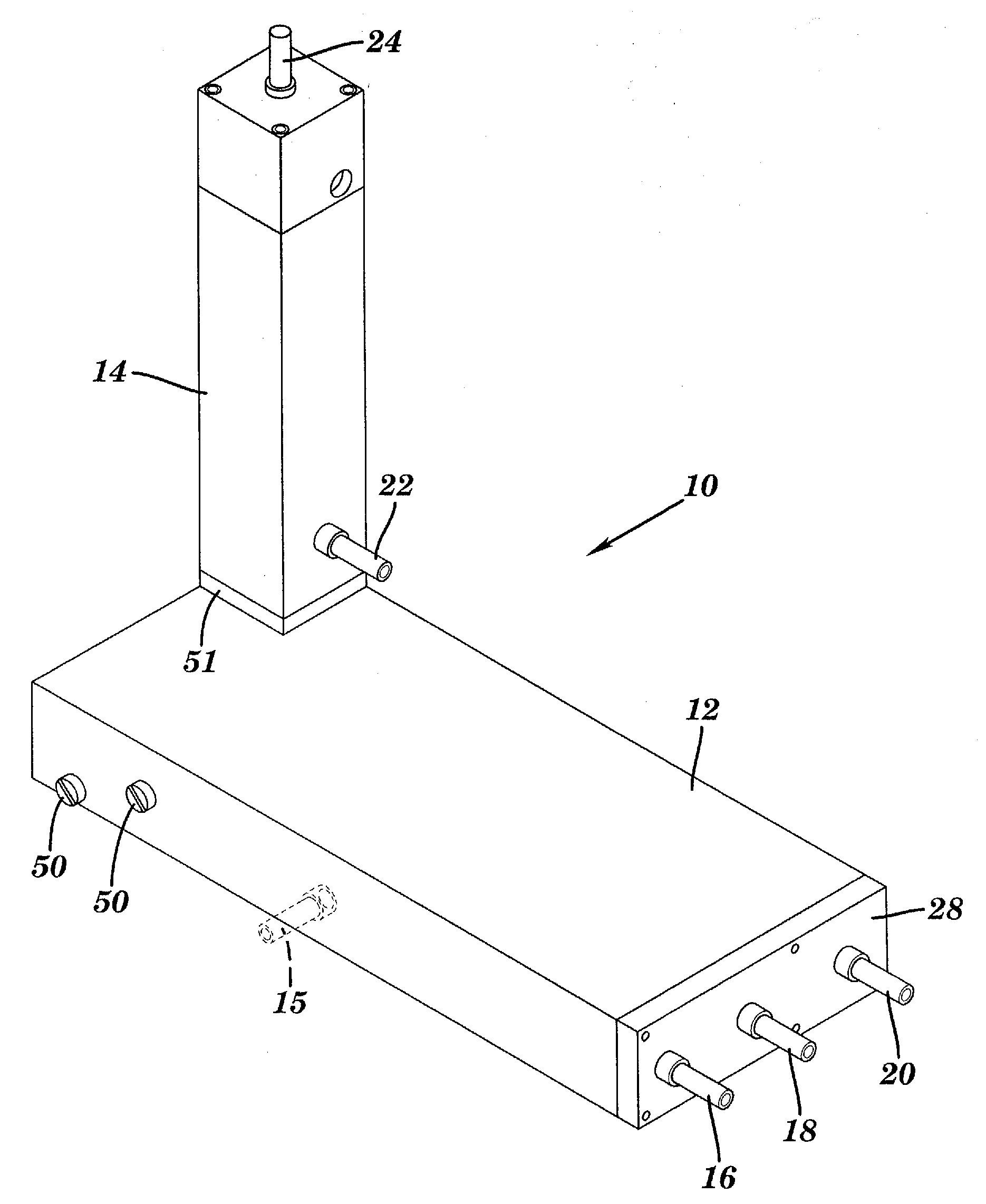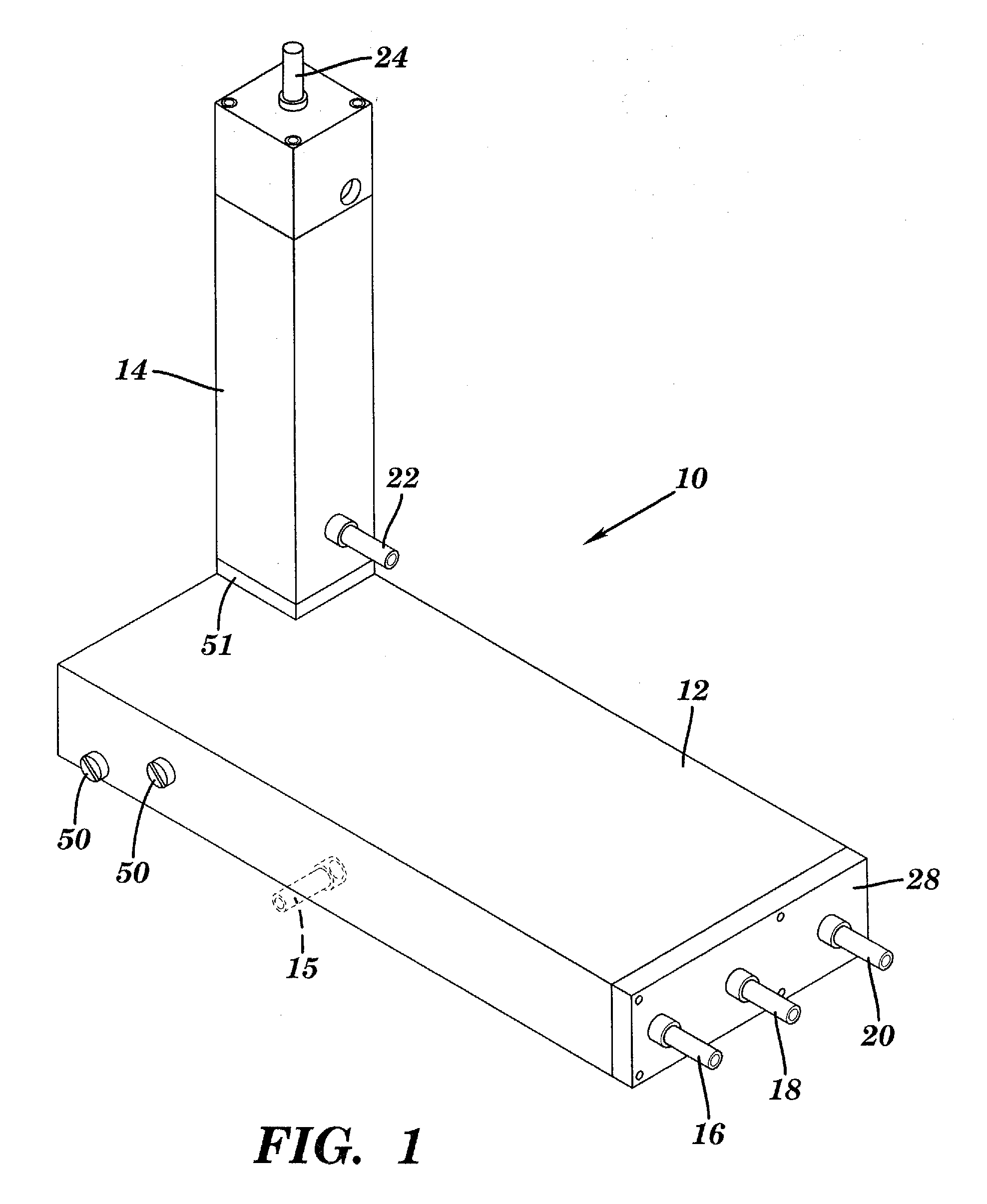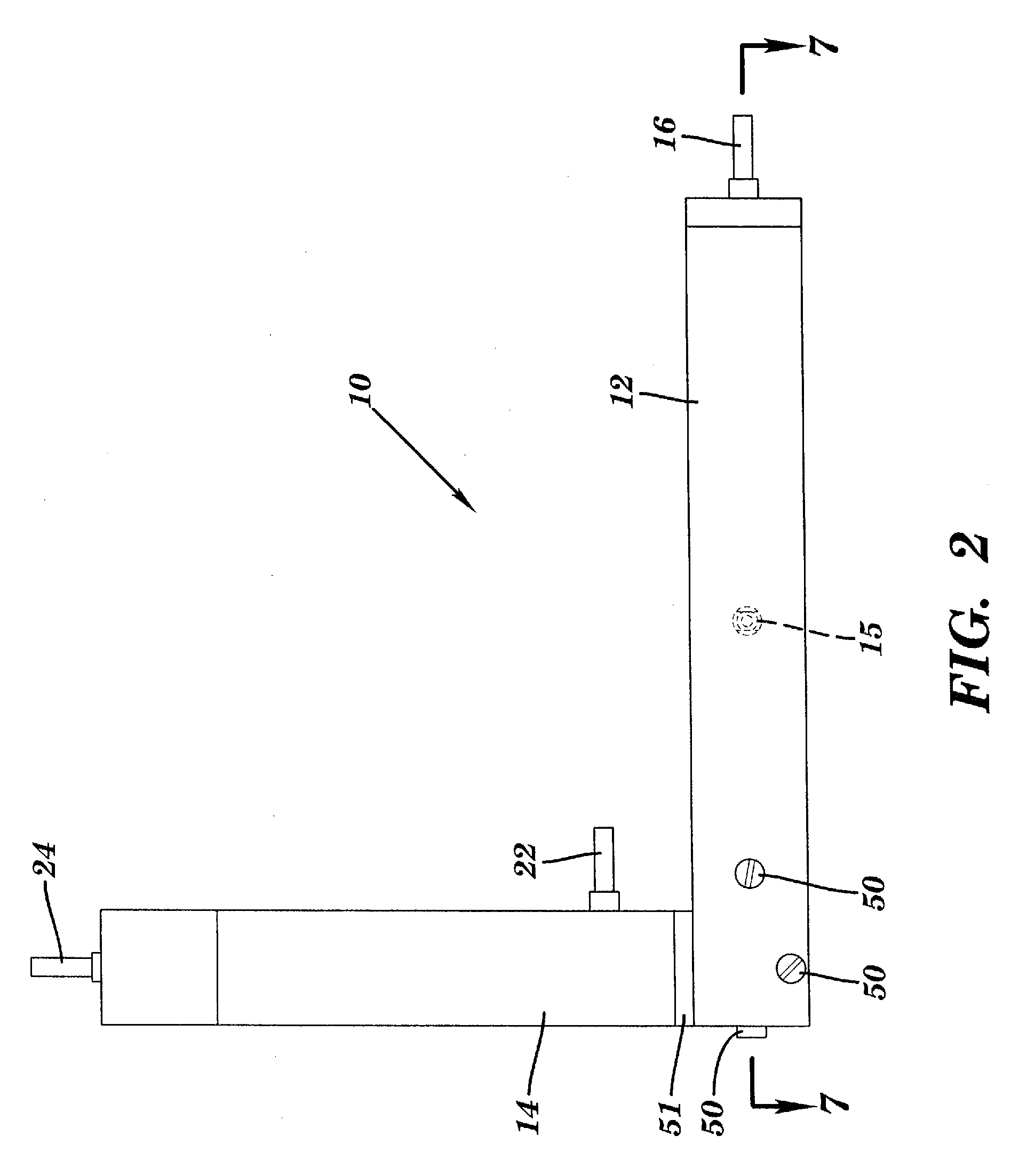Devices, methods, and systems for detecting particles in aerosol gas streams
a technology of aerosol gas and detection methods, applied in the direction of indirect and direct heating destructive distillation, instruments, separation processes, etc., can solve the problems of limited number of instruments available, conductive cooling cnc has not been developed into a viable commercial instrument capable of particle detection down to 2 nanometers, and tmcnc has not been developed into a viable commercial instrumen
- Summary
- Abstract
- Description
- Claims
- Application Information
AI Technical Summary
Benefits of technology
Problems solved by technology
Method used
Image
Examples
Embodiment Construction
[0038]FIG. 1 is a perspective view of a turbulent mixing condensation device 10 according to one aspect of the invention. Device 10 includes a vapor generator 12 and a condensation chamber 14. According to aspects of the invention, vapor generator 12 is adapted to generate a vapor from a liquid working fluid introduced to one or more input nozzles 16, 18, and / or 20, and transfer the vapor to condensation chamber 14 where the vapor is mixed with a sample gas having particles introduced via nozzle 22. In one aspect, condensation device 10 may include one or more fluid injection nozzles 15 (shown in phantom) to supplement or replace input nozzles 16, 18, and 20. In condensation chamber 14, the working fluid vapor condenses on the particles introduced with the sample gas to create enlarged particles, or nuclei. The vapor having the enlarged particles is then discharged from outlet 24 to a particle-detecting device (not shown), for example, an optical particle counter, to detect at least...
PUM
| Property | Measurement | Unit |
|---|---|---|
| Fraction | aaaaa | aaaaa |
| Fraction | aaaaa | aaaaa |
| Fraction | aaaaa | aaaaa |
Abstract
Description
Claims
Application Information
 Login to View More
Login to View More - R&D
- Intellectual Property
- Life Sciences
- Materials
- Tech Scout
- Unparalleled Data Quality
- Higher Quality Content
- 60% Fewer Hallucinations
Browse by: Latest US Patents, China's latest patents, Technical Efficacy Thesaurus, Application Domain, Technology Topic, Popular Technical Reports.
© 2025 PatSnap. All rights reserved.Legal|Privacy policy|Modern Slavery Act Transparency Statement|Sitemap|About US| Contact US: help@patsnap.com



